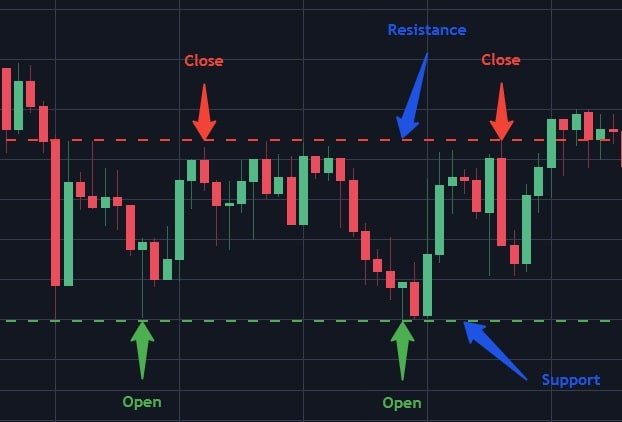
Certainly! Developing a profitable cryptocurrency trading strategy involves a combination of technical analysis, risk management, and backtesting. Here are some steps to get you started:
-
Setting Up the Environment:
- Ensure you have Python installed and set up.
- Consider using Google Colab for cloud-based Python execution and easy sharing. -
Obtain Historical Data:
- Fetch historical cryptocurrency data using libraries like `yfinance` or APIs like CoinGecko.
- This data will be crucial for analysis and strategy development. -
Visualize Financial Data:
- Use libraries like `matplotlib` or `plotly` to visualize price movements, trends, and patterns. -
Technical Analysis:
- Explore technical indicators (e.g., moving averages, RSI, MACD) to identify potential entry and exit points.
- Consider candlestick patterns and volume analysis. -
Building Trading Strategies:
- Define your strategy rules based on technical indicators or patterns.
- For example, a simple moving average crossover strategy: Buy when the short-term moving average crosses above the long-term moving average, and sell when it crosses below. -
Backtesting and Strategy Evaluation:
- Backtest your strategy using historical data to assess its performance.
- Calculate metrics like Sharpe ratio, maximum drawdown, and win rate. -
Risk Management and Optimization:
- Implement risk management rules (e.g., position sizing, stop-loss, take-profit).
- Optimize strategy parameters to maximize returns while minimizing risk.
Remember that trading cryptocurrencies involves risk, and no strategy guarantees high profits. Always start with a small capital and gradually scale up as you gain confidence. 🚀💰
How do I handle slippage and fees in my strategy?
Handling slippage and fees is crucial for an accurate assessment of your trading strategy's performance. Let's break it down:
-
Slippage:
- Slippage occurs when your executed price differs from the expected price due to market volatility or order book liquidity.
- To account for slippage, consider using limit orders instead of market orders.
- Implement a buffer in your entry and exit points to accommodate potential slippage. -
Fees:
- Trading platforms charge fees for executing orders (maker or taker fees).
- Calculate the total fees incurred for each trade:
Total Fees = Entry Fee + Exit Fee
- Adjust your strategy's profit calculation by subtracting the total fees. -
Net Profit Calculation:
- After accounting for slippage and fees, your net profit per trade is:
Net Profit = Profit from Trade - Total Fees -
Risk-Reward Ratio:
- Consider the risk-reward ratio when setting stop-loss and take-profit levels.
- A favorable risk-reward ratio ensures that winning trades compensate for losing ones. -
Backtesting with Realistic Assumptions:
- When backtesting, simulate slippage and fees to get accurate results.
- Use historical data with realistic bid-ask spreads and fee structures. -
Optimization:
- Optimize your strategy parameters considering slippage and fees.
- Some strategies may perform well in theory but poorly in practice due to these factors.
Remember that minimizing slippage and fees contributes to better overall profitability. Regularly review and adjust your strategy as market conditions change. 📈💡
Can you recommend any Python libraries to handle fees and slippage in backtesting?
Certainly! When building a backtesting system in Python, you'll want to consider handling fees and slippage. Here are some Python libraries and tools that can assist you:
-
Pandas:
- Pandas is a powerful data manipulation library that allows you to handle historical data efficiently.
- It's commonly used for data preprocessing, cleaning, and organizing time series data for backtesting. -
OpenBB Platform:
- The OpenBB Platform provides seamless access to market data from multiple providers.
- It's useful for fetching historical price data, which is essential for accurate backtesting. -
PyAlgoTrade:
- PyAlgoTrade is an open-source backtesting framework that supports event-driven strategies.
- It includes features like handling transaction costs (fees and slippage), technical indicators, and performance metrics.
Remember to simulate realistic transaction costs, including slippage and fees, to ensure your backtesting results reflect actual trading conditions. 🚀🐍
Congratulations!
✅ Good job. Your post has been appreciated and has received support from CHESS BROTHERS ♔ 💪
♟ We invite you to use our hashtag #chessbrothers and learn more about us.
♟♟ You can also reach us on our Discord server and promote your posts there.
♟♟♟ Consider joining our curation trail so we work as a team and you get rewards automatically.
♞♟ Check out our @chessbrotherspro account to learn about the curation process carried out daily by our team.
🏅 If you want to earn profits with your HP delegation and support our project, we invite you to join the Master Investor plan. Here you can learn how to do it.
Kindly
The CHESS BROTHERS team